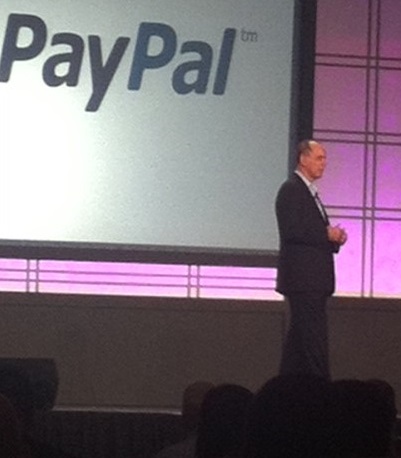The Ministry of Tourism has announced that this project will become available to visitors soon.
The Government of India’s Ministry of Tourism has released an updated for its greatly hyped QR codes project that is being created through an agreement that has been signed with Audio Compass (India) Pvt. Ltd.
This travel app provider will help the Ministry of Tourism provide visitors to the country with an enhanced experience.
The contract also involves Genesys International Corp. These partnerships were made last month so that QR codes will become available at a number of different tourist destinations before the close of 2013. The project was first proposed at the beginning of this year and has received a great deal of media coverage.
The goal of the Ministry of Tourism is to add QR codes to provide tourists with information at the most popular destinations.
 The QR codes will be placed at some of the hottest tourism spots throughout India. These two dimensional barcodes make it possible to provide tourists carrying smartphones and tablets with a great deal more information than would be available through standard signage. This particular project will be using the scans to link tourists directly with websites, text, phone numbers, and email addresses that they might find useful.
The QR codes will be placed at some of the hottest tourism spots throughout India. These two dimensional barcodes make it possible to provide tourists carrying smartphones and tablets with a great deal more information than would be available through standard signage. This particular project will be using the scans to link tourists directly with websites, text, phone numbers, and email addresses that they might find useful.
According to the Audio Compass chief executive and founder, Gautam Shewakramani, “One of the biggest challenges for travellers is the last mile of travel, that is, when they are past planning and booking stage and are actually on ground travelling. We are not doing a great job of providing tourist information, so they have to rely on expensive and unreliable sources like unofficial touts. This will make tourists access information while travelling in a hassle-free manner.”
That company already provides audio guides at a number of the most popular tourist destinations, including Agra Fort, the Salar Jung Museum, Khajuraho, and the Taj Mahal. Now, through the use of QR codes, these places will have their experiences enhanced for all mobile using visitors. Those will be the first locations to feature the barcodes, though the advertising driven model will expand from that point.
The digital wallet giant has chosen its new tack to achieve dominance in this increasingly crowded space.
PayPal used the massive Money2020 event in Las Vegas to reveal that it is getting behind QR codes as a part of its broader plans for mobile payments that will carry their online successes over to the in-store experience.
The decision to choose the barcodes has added to a trend beginning to turn away from NFC technology.
The decision that PayPal has made to use QR codes as a central element of their mobile payments experience underscores the progress that the technology has made among both merchants and consumers. It reflects the fact that consumers have become familiar with the black and white squares, and know how to scan them using their mobile devices.
 The QR codes will provide a boost to the security level of the Beacon solution that was launched last month.
The QR codes will provide a boost to the security level of the Beacon solution that was launched last month.
PayPal has taken a considerable focus on moving into the brick and mortar experience, along with a flood of other industry giants that are hoping to become leaders in the mobile payments sphere. Though NFC technology had been believed to be a possible standard in this area, the very slow adoption of Google Wallet, Isis, and other wallets based on near field communications has caused many providers to look to other tech possibilities.
The alternative that stood out at Money2020 was QR codes, which were selected for integration by not only PayPal, but also MasterCard – a provider that has based its services on NFC for some time now, and intend to continue this over many different types of devices as a complement to the use of the barcodes.
Vice president of retail and prepaid products at PayPal, Don Kingsborough, was present at Money2020 and explained that the adoption of the QR codes is a part of the overall trend toward the omni-channel experience. This is a more seamless version of the multi-channel experience, where one crosses into the next, instead of remaining parallel to one another.
To illustrate the concept using PayPal technology, a consumer could walk into a store with her mobile device. At that time, the PayPal Beacon provides that individual with an alert regarding a deal that is going on in the store. The consumer can then pick up the item and bring it to the point of sale, where the transaction can be completed using mobile payments that are secured with the scans of QR codes. In this way, the in-store, online, and mobile experiences coexist and provide the consumer with a considerably enhanced shopping experience.
 The QR codes will be placed at some of the hottest tourism spots throughout India. These two dimensional barcodes make it possible to provide tourists carrying smartphones and tablets with a great deal more information than would be available through standard signage. This particular project will be using the scans to link tourists directly with websites, text, phone numbers, and email addresses that they might find useful.
The QR codes will be placed at some of the hottest tourism spots throughout India. These two dimensional barcodes make it possible to provide tourists carrying smartphones and tablets with a great deal more information than would be available through standard signage. This particular project will be using the scans to link tourists directly with websites, text, phone numbers, and email addresses that they might find useful.
 The QR codes will provide a boost to the security level of the Beacon solution that was launched last month.
The QR codes will provide a boost to the security level of the Beacon solution that was launched last month.